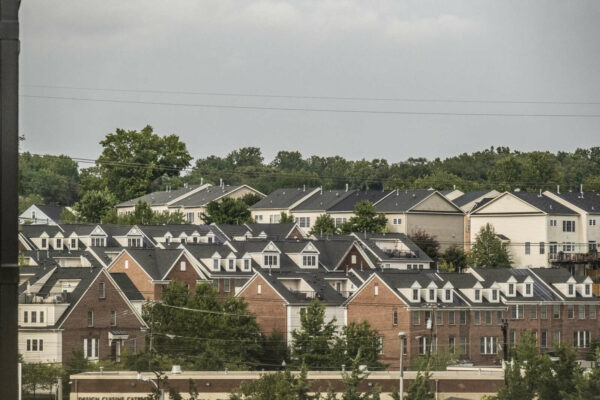
(Updated at noon) A new report supports Arlington County’s consideration of residential zoning changes as a way to counteract past discriminatory practices. But critics of the changes could harm, not help, the local Black community.
The NAACP Arlington Branch hosted an online discussion last Wednesday (July 20) about the McGuireWoods report in light of local debate around the Missing Middle Housing Study proposal, which would allow small-scale multifamily housing in areas currently zoned only for single-family homes.
The County Board expects to vote on the zoning changes in December.
The report, which looked at local and state policy changes to address housing segregation in Virginia, pointed out that although Arlington did not adopt an explicit racial zoning ordinance, redlining and restrictive covenants resulted in most of the majority white areas permitting single-family detached housing only, thus raising the relative cost of homes in those areas.
The report recommended adding missing middle housing types to zones that currently only allow single family housing, as the study recommends. Since Arlington is considering allowing housing with up to eight units in those areas — depending on lot size — the report considered the county “well ahead of the curve compared to most places in the state,” Matthew Weinstein, an attorney with the legal and public affair firm, said during the presentation.
Organizations opposing missing middle housing content, however, that “missing middle” would not be affordable to lower-income groups. Officials expect households with an income between $108,000 and over $200,000 to be able to afford the new proposed housing types, according to a county report in April.
The median household income of Black Arlington residents is around $67,000, according to a county website.
“So we’re off target for African Americans currently living in Arlington,” said Anne Bodine, of Arlingtonians for Our Sustainable Future, an advocacy group against increased housing density.
“Homeownership per se, for [the] current African American population in Arlington, we don’t see that this is an option for the majority of that population,” she said.
Although Weinstein did not believe missing middle housing could solve all issues, it was important to “increase housing availability and housing stocks so more people could live here affordably,” he said.
During the NAACP presentation, Weinstein also said that discriminatory housing policies in the past made it harder for Black residents to own homes, preventing many from accumulating wealth through generations.
However, since the County Board is not expected to restrict new missing middle housing to for-sale housing only, it would be more likely for those newly-created units to become rentals, Bodine said.
“Just the way [a] condo has to be set up in Virginia, it’s much more complicated legally and much more expensive,” Bodine said. “Those costs make it more likely that the units will end up becoming rentals.”
Other policies the report recommended include providing financial support to formerly redlined neighborhoods as part of Arlington’s comprehensive plan, a guide the county uses to set priorities. The report also suggested updating zoning ordinances to encourage mixed-use buildings with higher density in commercial areas, using density bonuses and other affordable housing incentives, and focusing on home ownership like community land trusts.
Bodine believed there are other ways to achieve more diverse and equitable housing, such as cash rental vouchers for people earning lower incomes, scholarships for children coming from low-income families, and keeping current income thresholds to qualify for affordable housing on Columbia Pike, among other things.
The local NAACP has endorsed the missing middle plan, but previously said that more action would be necessary to better integrate Arlington neighborhoods.

